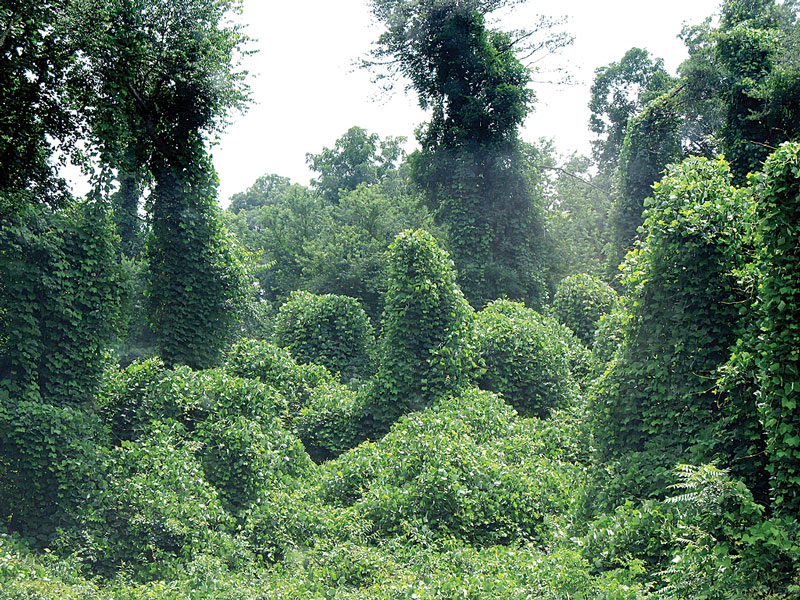
Kudzu, a native of Asia, is the poster child of invasive weeds in the United States. Photo by Robert Michalove/Creative Commons
Quotations about weeds abound, just as weeds do, and perhaps the most commonly cited, often attributed to Donald Culross Peattie, is that a weed is “a plant out of place.” That said, some weeds are so unpleasant in appearance, smell or in their negative effect on humans, animals or other plants that it’s hard to believe there is actually a place where they truly do belong.
Golf course superintendents are generally not on friendly terms with weeds, although those who create naturalized areas that cater to pollinators don’t shy away from milkweed — which raises more than one question. Going back to the plant out of place: If you are deliberately planting milkweed, is it really a weed? And just because it has the word “weed” in its name doesn’t make it a weed, does it? In fact, there is often a fine line between a desirable grass and a weedy grass. Is Poa annua a grass or a weed? Again, a plant out of place.
Just as GCSAA is the association and source of information for superintendents, the Weed Science Society of America (WSSA) is “a nonprofit professional society promoting research, education and awareness of weeds in managed and natural ecosystems.” Many turfgrass scientists, professors and students are members of WSSA.
WSSA goes beyond the “plant out of place” description and defines a weed as “a plant that causes economic losses or ecological damage, creates health problems for humans or animals, or is undesirable where it is growing.” The society further distinguishes common weeds such as crabgrass, giant foxtail and common lambsquarters from noxious and invasive weeds. To be “noxious,” a weed must meet t-he legal definition in the Plant Protection Act. More than 100 weeds have qualified for the Federal Noxious Weed List. Invasive weeds, many of which were introduced as ornamentals — for example, tamarisk and Japanese barberry — also fall under the control of the federal government through Presidential Executive Order 13112, which prohibits federal agencies from carrying out actions that would encourage the spread of invasive weeds.
The WSSA has released several fact sheets about weeds. The information is sometimes astonishing and could qualify as “fun facts about weeds” if the facts were not so often just a little bit frightening:
- By definition, weeds outcompete desirable plants for water and other resources. According to the WSSA, one mature tamarisk plant can consume 200 to 300 gallons in a day.
- Allelopathic weed species can actually inhibit the growth of nearby plants. However, some desirable plants, such as tall fescue, have been shown to be allelopathic to some weeds.
- Seed from a flowering weed, moth mullein, germinated after being buried for 130 years.
- Poa annua is known for its prodigious seed banks: The seeds survive for about six years, and research by Mary Lush et al. found that P. annua seed banks hold about 19,500 seeds per square foot.
- Poa has nothing on horseweed (a single plant produces 200,000 seeds) or Palmer amaranth (one plant can produce a million seeds).
- The stems of Palmer amaranth are strong enough to damage farm equipment.
- It is common knowledge that weed seeds can be consumed by birds and livestock and transported in bird droppings or manure, but earthworms also transport weed seeds into their burrows. WSSA says that two-thirds of giant ragweed seedlings emerge from earthworm burrows.
- Carabid beetles actually eat large amounts of weed seed.
- Thousands of birds, including eagles, geese, ducks and coots, have died from the toxin found in an invasive weed, aquatic hydrilla.
- And finally, kudzu, which can cover entire fields and hills, will form mats that are more than 8 feet thick and weigh hundreds of pounds.
Beware of wily weeds, and be grateful that, in most cases, the truly bad weeds aren’t found on the golf course.
Teresa Carson is GCM’s science editor.